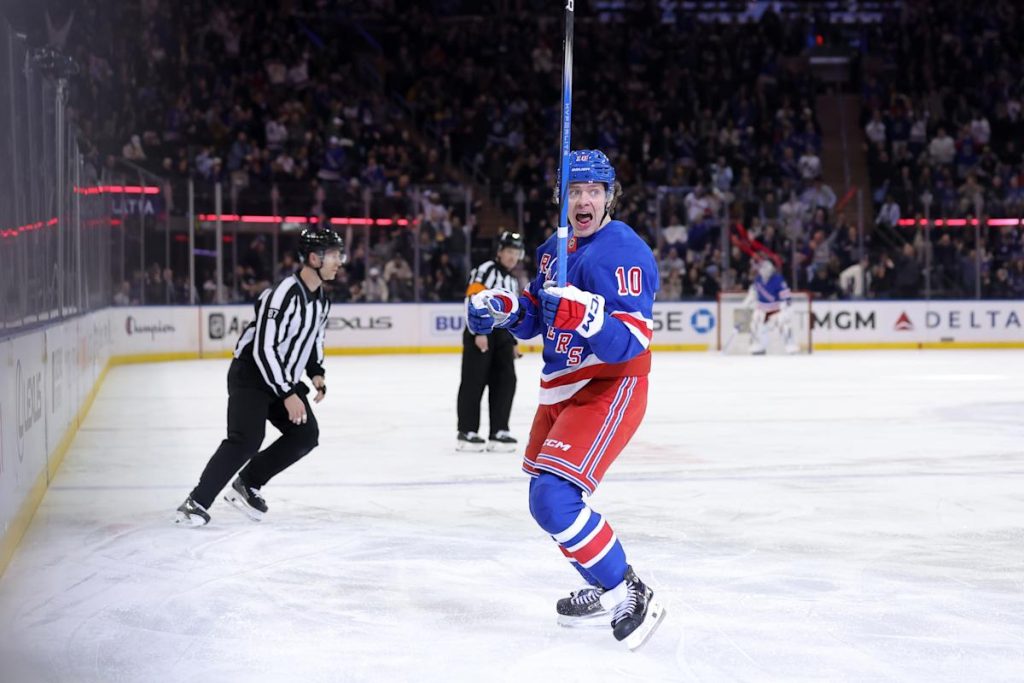The NHL’s Experiment with the International Point Format
For the 4 Nations Face-Off, the NHL took a bold step by adopting the international point format, a system that awards three points for a regulation win, two points for an overtime or shootout win, one point for an overtime or shootout loss, and no points for a regulation loss. This decision, which marked the first time the NHL used this format at its own international event, has raised eyebrows and sparked discussions among hockey fans and analysts. The primary reason for this choice was to ensure a clear and fair method of identifying the championship participants, especially given the tournament’s brief three-game round-robin structure. The format minimized the need for extensive tiebreakers, making the outcome more straightforward. With Sweden’s victory over the U.S. in the final round-robin game, Canada had already secured a spot in the finals, thanks to their earlier win over Sweden. This clear-cut result has many wondering if the NHL might consider implementing this system more broadly.
Connor McDavid and the New Format
Almost 15 years to the day from Sidney Crosby’s iconic Golden Goal at the 2010 Winter Olympics, Connor McDavid stepped up to the plate, scoring the decisive overtime goal that secured Canada’s win in the 4 Nations Face-Off. This moment not only highlighted the excitement and drama that the 3-2-1-0 format can bring but also demonstrated how players can rise to the occasion when the stakes are high. McDavid’s performance is a testament to the idea that rewarding regulation wins with three points can incentivize teams to play more aggressively and decisively during the regular 60 minutes of play, rather than settling for an overtime point. The success of the tournament and the players’ response to the new format have added fuel to the debate about whether the NHL should adopt it in the regular season.
The Impact on the Eastern Conference
The potential impact of the 3-2-1-0 system on the NHL’s Eastern Conference is particularly intriguing. According to data from Natural Stat Trick, which has been tracking this option for years, the New York Rangers would stand to benefit significantly. With 26 regulation wins, the Rangers would jump from being two points out of the playoffs to securing the first wild card spot. This shift would ripple through the standings, affecting teams like the Detroit Red Wings, Ottawa Senators, Columbus Blue Jackets, and Boston Bruins, all of whom would drop one spot. The Flyers, with only 16 regulation wins, would be completely ousted from the playoff picture. The Rangers, known for their passionate fan base and storied history, would undoubtedly be thrilled by the prospect of such a change, as it could keep their playoff hopes alive and inject more excitement into the season.
The Case for and Against the Three-Point System
The 3-2-1-0 system has its proponents and detractors. Fans and analysts who support it argue that it rewards teams for playing more aggressive and decisive hockey during regulation time. By giving three points for a regulation win, this format encourages teams to push for a complete victory rather than settling for an overtime point and potentially losing in a shootout. This can lead to more exciting and dynamic games, enhancing the overall fan experience. However, critics of the system point out that it could unfairly penalize teams that frequently go to overtime or shootouts, suggesting that these outcomes are still valid measures of a team’s performance and should be rewarded. The debate is ongoing, and the success of the 4 Nations Face-Off provides valuable insights into how the system might work in a larger, more competitive setting.
The Western Conference Standings
In the Western Conference, the adoption of the 3-2-1-0 format would have a less dramatic impact. All eight playoff positions would remain unchanged, but there would be a slight shift in the order of teams just below the playoff line. The St. Louis Blues, with one additional regulation win, would move ahead of the Utah Hockey Club into 10th place, based on the tiebreaker. The Seattle Kraken, with 20 regulation wins, would also see a slight improvement in their position. However, the Kraken’s high number of games played would still be a significant obstacle to a meaningful playoff push. Overall, the Western Conference’s standings would look more stable under the new format, but the added clarity and competitive pressure could still provide a boost to teams on the bubble.
The Future of NHL Scoring Systems
The NHL’s decision to use the 3-2-1-0 format for the 4 Nations Face-Off is a clear signal that the league is open to exploring new ways to enhance the game’s excitement and competitive balance. While the regular season has not yet seen this format, the positive reception from players and fans during the tournament suggests that it could gain traction in the future. The New York Rangers, and many other teams, would undoubtedly be in favor of such a change, as it could make the race for playoff spots more competitive and engaging. However, a broader implementation would require careful consideration of the potential impacts on team strategies and the overall integrity of the game. As the NHL continues to evolve, the 3-2-1-0 system remains a compelling option that could reshape the league in meaningful ways.











